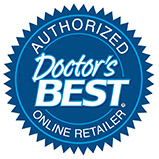|
||||||||||||||||||||||||||||||||||||||||||||||||||
|
Curamin: Pain Free ... Naturally!
By Terry Lemerond Ouch! We have all experienced pain. In fact, more than 50 million Americans suffer from chronic pain. According to The Journal of the American Medical Association, pain is the primary reason why people seek the advice of health professionals and use complementary and alternative medicine. Pain occurs when nerve endings become irritated. It can be exacerbated by nutritional imbalances, lack of sleep, hormonal factors, and other stresses. In general terms, pain is symptomatic of some type of dysfunction and inflammation in the body. The first reaction of those experiencing pain, whether acute or chronic, is to reach for pain-reducing medication. Unfortunately, pain-control drugs have two basic problems: 1) they artificially interfere with the body's usual inflammation responses; and 2) they have detrimental side effects. Remember the FDA's withdrawal of VIOXX! Lauded as a super drug, a study showed it was found to cause increased risk of heart attacks and strokes. Meanwhile, the most commonly used pain relievers - nonsteroidal anti-inflammatory drugs (NSAIDs), such as ibuprofen - can cause intestinal tract ulcers and other problems. Terry Naturally created Curamin, an all-natural propriety blend of curcumin, curcuminoids, Boswellia, DLPA (dl-phenylalanine), and nattokinase. Here is how each component works on the mechanism related to pain relief. A Good Time for Turmeric The foundation of this formula is the spice, turmeric, used for over 2,500 years in cooking and healing. It comes from the root of Curcuma longa, a leafy plant in the ginger family. Its active component is curcumin. Curcumin has been shown to have six fundamental healing properties: anti-inflammatory, antioxidant, antiviral, antibacterial, antifungal, and anti-cancer. Because of curcumin's broad healing potential, research on its use is progressing rapidly with at least seven recent or current clinical trials being conducted in the US alone. Several double-blind studies have shown that curcumin is as effective as the drug, phenylbutazone, in reducing arthritic pain, swelling, and inflammation. It has also been effective in treating post-surgical inflammation. Since many ailments involve some type of inflammation and pain, the list of disorders where curcumin could be helpful is very long. At this time, however, the biochemical bases of curcumin's therapeutic effects are not fully understood. It is known to be tissue specific. In some cases, curcumin exhibits actions similar to tumor necrosis factor and growth factor blockers. With autoimmune diseases, curcumin regulates pro-inflammatory signaling. Turmeric contains three analogues of curcumin called, curcuminoids. Some researchers suggest that the mixture of all three has greater potency than any single one. For this reason, the pain relief formula contains both curcumin and curcuminoids. Boswellia Benefits Boswellia serrata, or Indian frankincense, is the second anti-inflammatory herb in the formula. The important active components are boswellic acids from the plant's resins. Its traditional uses include various inflammatory disorders, pain, and skin diseases and has similar effects as curcumin. The two compounds work well together. In general, standardized Boswellia has significantly reduced swelling and pain and usually morning stiffness for those with rheumatoid arthritis. In a study involving 260 arthritis patients, Boswellia reduced symptoms in nearly 60% of the patients, without significant side effects. In a three-month double-blind study, the combination of Boswellia and curcumin appeared to be an effective treatment for osteoarthritis of the knee. After one month, those who took the supplement showed a significant decrease in pain while walking. The inflammation-lowering benefits of the Boswellia/curcumin preparation continued throughout. Patients receiving the placebo showed no improvement. As with curcumin, all the actions of Boswellia are not completely understood. Recent research indicates that the anti-inflammatory herbs may modulate the expression of the genes involved in the inflammatory response. No adverse side effects or known negative interactions with other drugs, nutrients, or herbs have been reported for Boswellia. Its absorption may be better when taken with high-fat meals. DLPA Combats Chronic Pain The third component of this complex is dl-phenylalanine or DLPA (a mixture of the D and L forms of Phenylalanine). The potential pain relief action of DLPA has long been recognized. Phenylalanine is one of the eight essential amino acids ("essential" because we must have them to form proteins in our bodies). There is no scarcity of L-phenylalanine, which is found naturally in all high-protein foods. D-phenylalanine is its mirror image. It is the D-form that brings pain relief, while the L-form works as the delivery system. Preliminary evidence suggests that D-phenylalanine may reduce chronic pain by affecting the neural pain pathways in the brain. Because all the proteins we eat contain phenylalanine, our metabolic systems are set up to use it and its by-products without difficulty. For this and other reasons, DLPA is an extraordinarily safe material. Only individuals with the rare metabolic disorder phenylketonuria (PKU) need to avoid phenylalanine (both D- and L-forms). DLPA is also not recommended for those taking antidepressants, MAO inhibitors, or prescription stimulants. Natural Nattokinase The last nutrient component is nattokinase. Another natural food-based ingredient, nattokinase is an enzyme which is extracted from a traditional Japanese fermented soy "cheese," called natto. Japanese people have been eating natto for more than 1,000 years. The enzyme nattokinase is produced by Bacillus natto, a beneficial bacterium. The enzyme's usefulness in the pain relief formula comes through its effect in breaking down blood clots (thickened blood can add to pain). Natto extract has been observed to reduce blood pressure and alleviate leg swelling on long airline flights. There are also indications that it may be useful in treating the pain and swelling of endometriosis. Recommended Doses for Curamin The dosage recommended for pain relief is two capsules, twice daily. Two capsules contain a total of 1,005 mg of active ingredients. The manufacturer cautions not to take more than 8 capsules in 24 hours. |
|
||||||||||||||||||||||||||||||||||||||||||||||||



















